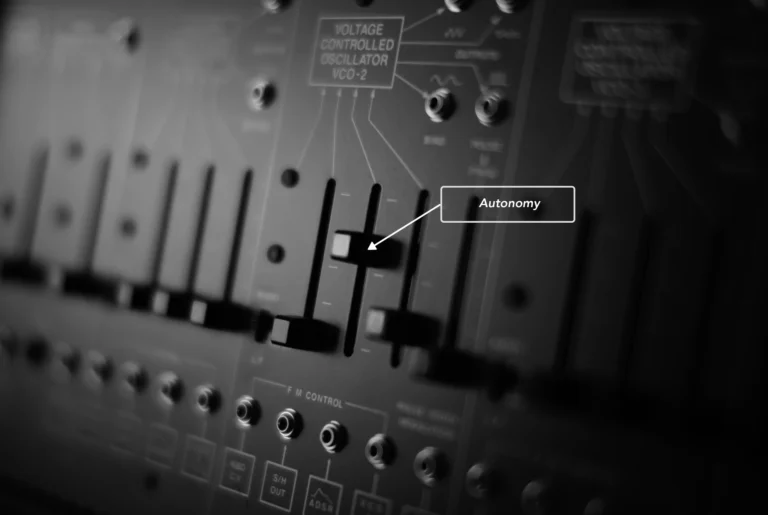This blog was written in collaboration between Mary Hart, Content Marketing Manager at Locus Robotics and Alex Sixt, Content Marketing Manager at Formant.
Implementing robots into any environment is no easy task; but in a warehouse environment, it can feel downright intimidating.
While the reasons for automation vary from business to business, warehouses are in great need of robots as they contend with mass labor shortages and a greater demand for efficiency than ever before. This also comes at a time when the global warehouse automation system is expected to reach $41 billion by 2027, as reported by LogisticsIQ. With a boom of growth in automation, millions of workers can expect to be working alongside automation in these few years, begging the question: how can warehouses successfully bring robots into an already overburdened workforce?
Of all the environments humans and robots work in together, warehouses experience the most human-robot interaction. Between a few walls, there are hundreds of aisles, workstations, loading docks, and more that humans and robots can cross paths that need to be planned for. As much planning as a new robot fleet requires, supporting your existing workers for the jump to automation is critical.
Identify where robots are needed
It may seem obvious to first address where robots will exist in a warehouse, but you may not be going about it in a way that best benefits staff.
Your workers are your biggest automation asset and should be treated as such—between more workers reaching retirement age and high competition between warehouses driving up compensation, warehouse managers have the task of making workers feel valued. How does this tie into automation? Your workers are the key to determining what the best robotic solution will be for your operation.
Each worker knows the ins and outs of everyday work on the warehouse floor, from bottlenecks to tasks where accidents and delays occur more often. They also have the best insight into which roles have tasks that require more walking than necessary or pushing and pulling 200-300 pound carts causing a higher risk for injury than others. By asking your workers about their concerns and common headaches, the right automation solutions will be much easier to identify and provide greater benefit than perspectives coming solely from company executives. Involving workers in the decision-making process will help them feel more involved in automation and more comfortable as they know ahead of time where robots will exist on the floor.
Figuring out the right tasks for automation is undoubtedly one of the most important aspects of implementing warehouse robots—but tapping into when is also vital, and can have an impact on the type of model you adopt. The traditional way of purchasing the hardware outright seems easier upfront, but costs can quickly add up between maintenance and scaling the fleet up/down depending on seasonal needs.
“Autonomous mobile robots (AMRs) are cool, but there’s not a CFO in the world who buys ‘cool’,” says Steve Branch, Vice President of Sales Engineering at Locus Robotics. “Instead, the CFO’s focus is on the ROI, labor retention, long-term maintenance needs, training, and more.”
A robotics-as-a-service (RaaS) model offers robots on a subscription basis, so companies can flexibly scale the fleet when needed without large upfront hardware costs. Although the warehouse may not own the robot, they have more flexibility to augment their staff where and when it’s needed, often also without being responsible for pesky maintenance.
Every industry has its own peak seasons (namely the holidays), meaning warehouses have to rise to the demand. Labor challenges are top of mind for warehouse managers especially during these times, as it’s difficult to fill open roles and train seasonal and peak associates quickly. Robotics helps solve these labor issues by augmenting the current workers, helping them to be more productive even during peak seasons with the same amount of workers.
“While your CFO wants to hear about the savings and ROI, their ears will perk up if the AMR you choose comes with an OpEx model rather than CapEx,” continues Branch. “Why? The industry is developing at a rapid pace. If you invest in a solution with a CapEx model, that means that you’ve committed to that solution for the lifetime of the solution, which could be seven to 10 years. With an OpEx model, like RaaS, you can be flexible with the number of bots you have at a time based on demand. When peak season comes around, simply add additional robots just for that timeframe to work in your facility with your human associates to cover orders.”
Fleets can be scaled as needed to help meet peak demand, therefore it’s important to plan the type of model you’d like in accordance with seasonality ahead of time, so you’re not racing to add robots at the last minute.
Craft a plan of action
Now that you’ve decided what robots you’ll be utilizing in your warehouse and where they’ll be, now comes the next challenge: supporting your staff through the change. Once you have a robotic solution chosen, your next priority should be all about your staff: planning training, crafting a reasonable timeline for deployment, and addressing concerns.
It’s likely almost none of your current staff have existing robotics experience, and that’s no cause for concern. Contrary to popular belief, training to work with robots—although it will be dependent on the capacity in which they work with them—is typically a quicker process than you’d expect. The best type of training will vary depending on your warehouse and its needs but most employees benefit from in-person training that provides hands-on experience.
For example, when a warehouse adopts a robotic solution from Locus Robotics, training happens in-person, right there at the site. Either the warehouse supervisor or manager will demonstrate to the worker how the display screen works on the LocusBot—and it’s highly intuitive and easy to understand, person-to-person.
“Warehouses can train new associates on the Locus Robotics solution in just 15 minutes and then be ready to start working,” says Mary Hart, Content Marketing Manager at Locus Robotics. “The display screen is intuitive and associates enjoy that the display is shown in their preferred language, making it even easier to understand for training and then picking and putaway tasks.”
Before a robotics solution, training could previously take up to a week or two for new associates to learn the scanners and RF gun systems. This is also a great time to discuss “game plans” for potential scenarios such as when a robot fails or experiences an error: who should be contacted, should it be documented, and how can employees make sure an issue doesn’t affect an entire department’s operations?
It’s also important not to forget about training necessary for any new employees who start after the robots are deployed and seasonal workers. Planning accordingly to ensure they have the proper time to adjust to robots as they begin their role is something that should be discussed with the HR department as it may adjust the hiring process.
Communication is key
Even with training in place and a timeline for your robot deployment, supporting your staff through the change is a huge responsibility—but certainly not an impossible one.
It all starts with communication. As soon as automation is a consideration, staff should be informed and invited to give feedback. A reliable timeline helps workers process this big change and prepare for any extra support they need from management. A point of contact that is easily accessible to warehouse staff should be appointed to streamline any concerns or questions workers may have. This ties into overall training for implementing robots, as well—even if training is easily done within one day or less, don’t assume all employees will feel comfortable operating alongside them right away. Check with employees afterward to see if they feel any further training is necessary and keep in close communication with the vendor in case further training is needed or questions arise. Robot literacy is not a race and all warehouse workers deserve an adequate amount of time to feel comfortable working with their robot counterparts.
Robots have plenty of stigma and misconceptions—especially as it pertains to job security. There’s a good chance some workers will be concerned about shifting roles due to robots, or their role becoming obsolete all together. It’s important to first dispel any fears of job losses and emphasize that robots will be helping to make processes more efficient rather than completely take them over. Instead, focus on the benefits workers will experience as a result of automation such as promoting productivity (relieving stress, especially in peak season), improved safety on the floor, and opportunities for upskilling, to name a few. On the flip side of stigmas, workers can enjoy the factor of being the “cool parent” that works with robots and are prepared for the future of work that we’re watching the evolution of, every day.
“Associates love working with LocusBots,” says Hart. “We’ve heard many times from our customers that their employees have smiles on their faces and aren’t fatigued from walking 10-12 miles each day pushing a heavy cart. Associates tell their managers that now they are able to go home and play with their kids at the end of the day, instead of being too exhausted to do so.”
Over the next few years, we’ll continue to see robots flow into warehouses. Although it’s easy to get excited about pushing automation forward in industry, helping these workers adjust must stay at the center of the conversation. By keeping strong communication and seeking employee feedback to inform the process, your workforce will have a much better grasp on working with robots by the time they deploy—not only streamlining warehouse operations but also ensuring workers feel valued every step of the way.



